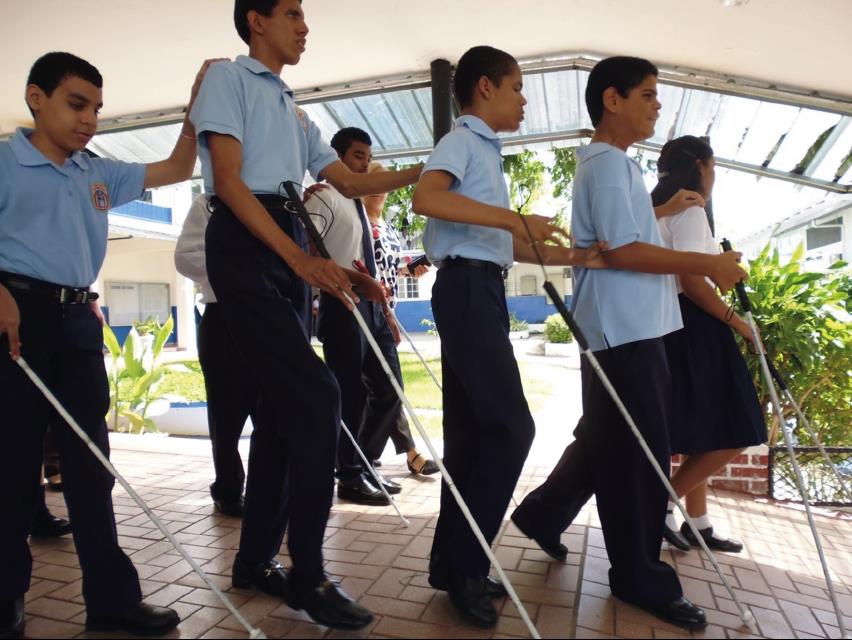Teaching students with disabilities to manage risks associated with natural disasters
- Solution
- Inclusive school safety in Panama (disasters and natural hazards awareness)
- Organization
- RET International - Protection through Education
- Country of Implementation
- Panama
- Region
- Latin America & Caribbean
- Subregion
- Central America
- Start Year
- 2015
- First published
- 31.01.2020

Solution details
“We have succeeded in making children and young people with disabilities, their caregivers, and their teachers the agents of their own security in case of emergencies.” Senior RET advisor
RET Americas Inc., is and independent 501 (c) 3 non-profit organisation. It presently acts as RET Headquarters for country operations in Latin America and the Caribbean. The organization runs an inclusive school safety project in Panama to teach students with disabilities how to manage the risks associated with natural hazards. This is the first ever project in Panama to integrate disaster risk reduction and management practices into public schools to address the needs of children and youth with disabilities. Since 2015, more than 4,000 young people with disabilities have taken part in the project.
Problems Targeted
Children and youth with disabilities in Panama are not sufficiently aware of the risks and dangers associated with then Niño phenomenon, and are not adequately trained to prevent and to manage the potential effects of natural disasters.
Solution, Innovation and Impact
RET Americas has developed inclusive learning methodologies to integrate disaster risk reduction and management (DRR&M) as a topic in public schools, introducing curricula and exercises specifically for students with disabilities. Two examples are first aid procedures tailored for students with cognitive disabilities and instructions in sign language about emergency procedures. The NGO also builds the capacity of education partners on DRR&M through trainings and guidelines, and it has created the first DRR&M set of language signs for deaf persons in Panama to support the programme. Youth with disabilities actively participate in the design and the activities of the project to increase the resilience of their schools and communities to disasters, for example, by assessing and improving proposed learning methodologies. Starting in 2015, and implemented over multiple phases, the project has reached more than 6,000 beneficiaries. More than 700 teachers and 339 public officials have participated in the trainings.
Funding, Outlook and Transferability
The project is funded by the Office of Foreign Disaster Assistance of the United States Agency for International Development (USAID-OFDA) through an annual average grant of $150,000. RET supports the project with in-kind contributions worth $12,300. With each phase the project has scaled-up its activities in Panama to reach more schools, local governments, and communities. The model could be replicated at the international level and adapted to different contexts. Subject to the availability of funds, RET Americas intends to replicate the project in other countries in the region, starting with Costa Rica.
Media
Related information
- Connections
- 1
-
Organization